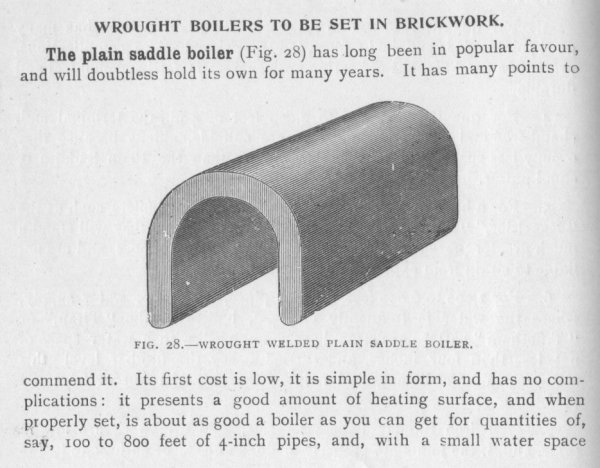| St Deny's Parish
Church Aswarby Lincolnshire |

| The Heritage Group is greatly indebted to the Church Recording Group of the Holland & Kesteven Antiques & Fine Arts Society (HAKAFAS), the local NADFAS group who alerted the Heritage Group to a very special discovery. In St Deny's the Parish Church of Aswarby is the only example that has so far been found of a historically rare saddle type boiler still in situ. |
All photographs have been kindly provided by HAKAFAS
The Parish church of St Denys is a Grade 1 Listed structure, which was restored during
the Victorian period 1847 - 1850 by Edward Blore. During this restoration box pews were
installed together with a raised Manorial pew, and a rebuilt Chancel. It is most likely that
during the restoration the floor pit and chimney were constructed for the installation
of the boiler and the heating system.

View into floorpit facing the furnace. Note the pipework partially buried in the floor on the right hand side. |
View into floorpit facing the rear vaulted coal storage area. |
View face on showing the saddle boiler with the firegrate and ash pit below |
Angled view showing the 3 soot clean out doors |
To the rear of the floor pit is a vaulted area where the coal was stored for firing the boiler |
Close up view of the two partially buried heating pipes that connected into the boiler |
The wrought iron welded saddle boiler was one of the earliest types of
boiler used for wet heating systems. It was always set into brickwork.
This is one of the earliest installations of the saddle boiler as there is no
evidence of any doors being fitted to the front of the brickwork enclosure.
Doors would have contained the fire and regulated the amount of combustion
air needed. This would have vastly improved the efficiency and heat output
of the boiler plant.
From the various photos shown the saddle boiler can clearly be seen set into
its brickwork enclosure with the fire bars of the grate visible. The brickwork front
around the saddle boiler has soot clean out doors fitted to either side and at the top.
Two Cast iron pipes can be seen buried in the concrete slab covering the
boiler enclosure. These are the flow and return pipes that must have
connected with flanged or welded connections fitted to the top of the boiler.
Through the curvature of the boiler shell can be seen the rear smoke
chamber where the flue gases collected before exiting into the
chimney located on the right hand side.

